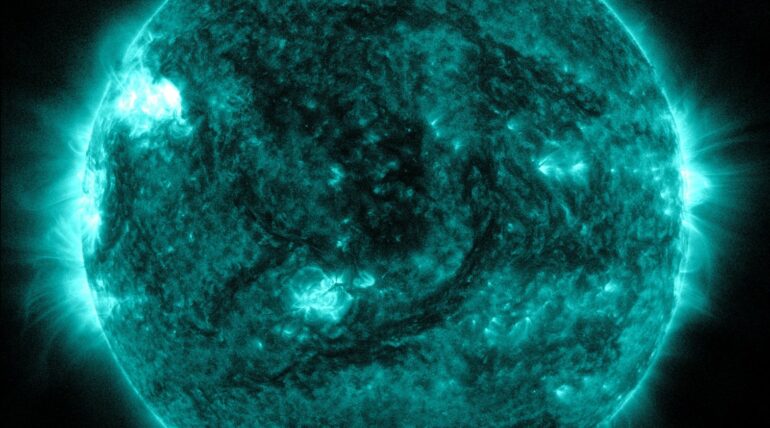
November 6, 2025
A strong geomagnetic storm has been interfering with Global Navigation Satellite Systems (GNSS) and other technological systems since last night and storm conditions are likely to continue into the rest of the week.
The Sun has been active since Sunday 2 November 2025 with M-class (moderate) and X-class (strong) solar flares recorded yesterday 5 November. Solar flares travel at the speed of light and reach Earth in about 8 minutes. These solar flares caused high frequency radio blackouts over the African region and Australia and parts of Asia for about 20 minutes each.
This model shows the impact of an M-class flare over the African region, causing a high frequency radio blackout that lasted about 20 minutes.
But the impact of the Sun’s activity is not limited to solar flares.
The flares were accompanied by coronal mass ejections (CME’s). While solar flares impact almost immediately, CME’s can sometimes take days to reach Earth. The CME impacted Earth at 23:20 last night (5 November 2025), causing a G1 (minor) storm. This morning, 6 November 2025, the SANSA Space Weather Centre recorded a G2 (moderate) storm that reached G3 (strong) levels at about 08:00. Storm conditions are expected to continue into the rest of the day.
The chances of continued solar flares have also been forecast, and another geomagnetic storm is expected to hit Earth tomorrow at moderate to strong levels.
These observations show geomagnetic activity as a global K-index and shows geomagnetic storm impact on 6 November 2025.
What are Geomagnetic Storms?
Geomagnetic storms are caused by coronal mass ejections (CME’s) which are vast clouds of charged particles released during a solar explosion. When these particles reach Earth and interact with its magnetic field, they can trigger geomagnetic storms. These storms are responsible for producing the spectacular auroras visible near the North and South poles. These storms also cause disruptions in technological systems such as Global Navigation Satellite Systems (GNSS) that affect aviation, maritime and drone industries. Other systems affected include communication, electrical power grids and electronic infrastructure.
Geomagnetic Storm Classifications (G-scale)
The G-scale, used by space weather centres globally, categorises geomagnetic storms based on their intensity and potential impact. It ranges from G1 (minor), G2 (moderate), G3 (strong), G4 (severe) and G5 (extreme).
Monitoring and Tracking space weather
SANSA monitors the impact of the storm as it arrives at Earth through a network of ground-based instruments over the African continent, the Southern Ocean and Antarctica. SANSA works with space weather centres across the globe to monitor these storms.
There is no way to prevent geomagnetic storms from impacting Earth, however, industries working with these technological systems can implement mitigating steps to minimise the impact.
For more information on daily space weather conditions, visit https://spaceweather.sansa.org.za/


